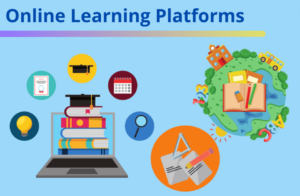Welcome to Blog 3!
For this week’s blog, I am discussing how digital technologies correlate with identity, digital platforms used in education, the importance of instructor and social presence in online learning, and how these topics integrate into distributed and open learning.
Digital Technologies and Identity
Digital technologies in the educational setting refer to the virtual devices or tools that are used to make distributed and open learning functional. It transforms the physical, mental, and social boundaries in an attempt to provide more opportunities to emerge. Digital technologies are also easily accessible and provide inclusive environments.
In a review of digital technologies in education, Haleem and colleagues (2022) discuss how these technologies are more efficient for interacting in learning communities during the COVID-19 pandemic. They also state children may want to become more integrated when digital technology is used, which was something I experienced during the pandemic. During online school, I found it was easier to interact and express myself to students after forming online groups. Profiles on different media forced students to enter relevant background information to find inclusive environments as well as Zoom groups to interact with the class, which altered how I perceived different identities.
Understanding the role of digital technologies in education: A review.
https://www.sciencedirect.com/science/article/pii/S2666412722000137
In terms of identity, digital environments can alter our perception and expression of identity. But how can differences in technology alter identity?
- Freedom and inclusion: Having the ability to freely communicate and learn with others online reduces many judgements found in in-person settings. This can lead to students expressing their identity more frequently or differently.
- Diversity across communities: Digital settings connect students around the world allowing for more opportunities to understand other cultures, leading to a stronger understanding of identity.
Overall, understanding digital technologies and their impact can help further understand distributed and open learning.
Digital Platforms in Education
Digital platforms in education are virtual environments that serve as areas for students to communicate and connect with each other. Successful platforms create areas for inclusivity and are equally accessible to all individuals.

Online Learning Platforms, By the Create & Learn Team. https://www.create-learn.us/blog/online-learning-platforms-for-kids/
During my online studies, the platforms I benefitted from were:
- Microsoft Teams
- Brightspace
- Zoom
- Packback
I benefited the most when platforms were easy to engage with. During my biology degree, I had lots of moments where I needed to pick a platform to use that was familiar and accessible to the entire group. For any platform involved in open learning, making sure everyone knows how to properly use it was key.
I found that Packback was incredibly easy to use while also contributing to my overall learning goals. Packback is built on conversations that start with a simple post and reply action, making it simple to build off of others’ ideas. It also uses artificial intelligence (AI) to grade students’ work making feedback instant. In an article by Amit Chowdhry, he mentions how Packback uses AI to create engagement in large classes by making conversations amongst peers faster and more reliable.
Does this mean AI may be more useful for distributed and open learning? What do you think contributes to better engagement?
Packback is Building A.I. to Enhance University Learning, by Amit Chowdhry on Forbes.
Instructor and Social Presence in Learning
Instructors online have to create a motivating community for students to interact and support each other’s learning goals. In a podcast discussing networked pedagogy, Bonnie Stewart states how digital environments have expanded beyond the limits of the traditional classroom and learning. This allows for different strategies and responsibilities to be used in virtual classrooms to create community engagement and inclusion across different media.
But why is it important for the instructor to be present and social in online classes? According to “Where’s the Teacher”, Cathy L. Barnes discusses that instructor presence is important because of motivation, assistance, and overall guidance in the course as it progresses. She mentions how her experience with the social absence of instructors in online classes makes it less engaging, leaving students behind when getting feedback, and progressing.
In the figure below, Cathy lists different strategies of what teachers can do to improve their social presence. For example, organization is a design strategy that can help with learning. Rubrics can be made to highlight a student’s path for an assignment when there is not a physical chalkboard present. Recorded lectures are also important for learning, as the delivery of content should serve as a framework for completing coursework.
In Bonnie Stewart’s podcast, she states that being able to understand the key information for learning allows students to contribute to more conversations and topics more confidently without confusion. Better course structure and instructor contribution can help make learning communities more engaging.

Teaching Strategies for Online Instructors. https://pressbooks.pub/humanmooc/chapter/wheres-the-teacher-defining-the-role-of-instructor-presence-in-social-presence-and-cognition-in-online-education/





